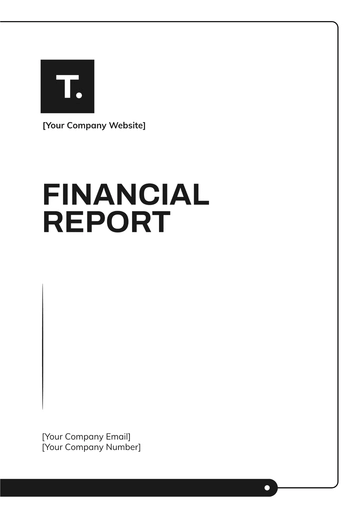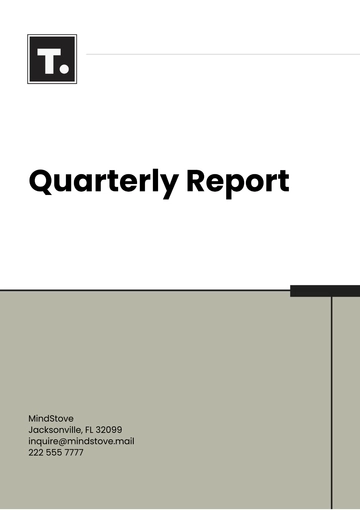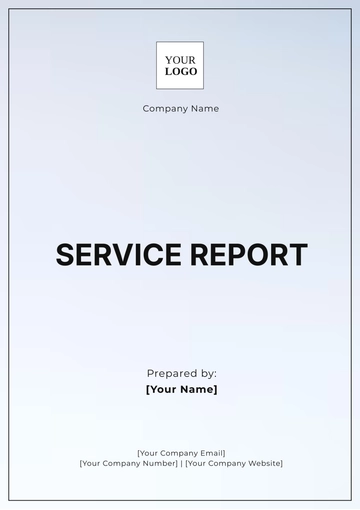Free Manufacturing Production Report

I. Introduction
The production report for [2055] provides an in-depth analysis of operational performance, key accomplishments, challenges, and opportunities for growth. This document evaluates production output, efficiency rates, and overall operational effectiveness to ensure the company remains competitive and meets its strategic objectives. By examining critical metrics, this report seeks to identify trends, celebrate achievements, and propose actionable recommendations for continuous improvement.
II. Production Metrics Overview
The year [2055] exhibited a robust production performance across key categories. This section breaks down each metric into subsections for a detailed understanding of our achievements and areas requiring attention.
A. Monthly Production Output
Production consistently exceeded targets, averaging [104.5%] performance over the year. Higher outputs were achieved due to optimized workflows and reduced equipment downtime. However, months with marginal underperformance suggest areas for targeted improvements in resource allocation during peak demand periods.
B. Equipment Utilization Rates
Equipment utilization remained high, particularly for assembly lines, which operated at [92%] efficiency. The downtime observed in packaging units highlights the need for increased preventative maintenance to minimize interruptions. Investing in advanced predictive maintenance tools can further enhance equipment reliability.
Equipment | Average Utilization Rate | Downtime | Maintenance Frequency |
|---|---|---|---|
CNC Machines | 88% | 120 Hours | Quarterly |
Assembly Lines | 92% | 95 Hours | Monthly |
Packaging Units | 85% | 150 Hours | Biannual |
C. Waste and Defective Products
Waste generation decreased progressively, reflecting the success of waste minimization initiatives. Defective units also saw a steady decline, averaging [2.075%] annually. This improvement can be attributed to enhanced quality control protocols and employee training programs focused on defect prevention.
Quarter | Waste Generated | Defective Units |
|---|---|---|
Q1 | 1,500 | 2.5% |
Q2 | 1,200 | 2.2% |
Q3 | 1,100 | 1.9% |
Q4 | 1,000 | 1.7% |
III. Workforce Performance Overview
The performance of the workforce is a key determinant of production success. This section evaluates productivity metrics and the impact of training programs in fostering skill development and efficiency among employees.
Metric | Value |
|---|---|
Average Employee Productivity | 85 units/day |
Overtime Utilization | 12% |
Training Hours per Employee | 45 hours annually |
Employees maintained a consistent productivity rate of [85] units per day, supported by comprehensive training programs. Overtime utilization remained moderate, ensuring the workforce was not overburdened while meeting production demands.
IV. Budget Overview
The following table outlines the financial allocation for key production activities in [2055].
Activity | Budget Allocated | Actual Spent |
|---|---|---|
Equipment Maintenance | $300,000 | $350,000 |
Employee Training | $200,000 | $180,000 |
Raw Material Procurement | $1,500,000 | $1,700,000 |
Facility Operations | $500,000 | $480,000 |
Spending on equipment maintenance exceeded the budget due to unplanned repairs. Conversely, training programs and facility operations were delivered under budget, offsetting some overages.
V. Key Accomplishments
Highlighting key achievements provides insight into the success factors driving production efficiency and innovation. These accomplishments serve as a benchmark for future endeavors.
Exceeded Production Targets: Achieved an annual production total of [110,000] units, surpassing the goal of [105,000] units by [4.8%].
Implemented Automation Upgrades: Introduced new automated systems, reducing manual intervention and improving consistency.
Waste Reduction Programs: Reduced waste by [20%] compared to [2054] through innovative recycling initiatives.
Enhanced Safety Measures: No reported accidents in [2055] due to stricter safety protocols and ongoing training.
Customer Satisfaction Improvements: Achieved a [95%] on-time delivery rate, boosting client satisfaction and repeat orders.
VI. Challenges and Recommendations
Challenges encountered in [2055] were both external and internal, requiring strategic interventions. [Your Company Name] provided actionable steps are outlined here to enhance production operations and address identified challenges.
A. Challenges
Supply Chain Disruptions: Several key suppliers faced delays, causing bottlenecks in production and missed delivery deadlines.
Equipment Downtime: Maintenance schedules were not consistently adhered to, leading to [650] hours of downtime that hindered production targets.
Labor Shortages: Recruitment challenges led to understaffed shifts during peak seasons, reducing overall output.
Rising Material Costs: Increased raw material prices significantly impacted the production budget, necessitating cost-saving measures elsewhere.
Capacity Constraints: Current facilities are nearing maximum capacity, limiting the ability to scale operations to meet growing demand.
B. Recommendations
Diversify Supplier Base: Mitigate supply chain risks by engaging multiple suppliers for critical materials, ensuring continuity during disruptions.
Expand Preventative Maintenance Efforts: Increase the frequency of equipment inspections and streamline maintenance processes to minimize downtime.
Enhance Recruitment Efforts: Introduce hiring incentives and collaborate with local trade schools to fill labor gaps during high-demand periods.
Adopt Advanced Cost Analysis: Implement real-time cost tracking software to identify inefficiencies and optimize material usage.
Plan Facility Expansion: Develop a phased expansion plan to increase production capacity and meet growing demand.
VII. Conclusion
The achievements of [2055] reflect [Your Company Name]’s dedication to excellence in production. Addressing the identified challenges and implementing the outlined recommendations will strengthen the company’s market position. By leveraging automation, enhancing workforce capabilities, and adopting sustainable practices, [Your Company Name] is well-positioned for success in the further years.
- 100% Customizable, free editor
- Access 1 Million+ Templates, photo’s & graphics
- Download or share as a template
- Click and replace photos, graphics, text, backgrounds
- Resize, crop, AI write & more
- Access advanced editor
Track operational progress with the Manufacturing Production Report Template from Template.net. This editable and customizable template includes fields for production volumes, downtime, and performance metrics. With the Ai Editor Tool, users can customize it to align with their reporting needs and industry standards. Leverage this tool for better transparency and operational control.
You may also like
- Sales Report
- Daily Report
- Project Report
- Business Report
- Weekly Report
- Incident Report
- Annual Report
- Report Layout
- Report Design
- Progress Report
- Marketing Report
- Company Report
- Monthly Report
- Audit Report
- Status Report
- School Report
- Reports Hr
- Management Report
- Project Status Report
- Handover Report
- Health And Safety Report
- Restaurant Report
- Construction Report
- Research Report
- Evaluation Report
- Investigation Report
- Employee Report
- Advertising Report
- Weekly Status Report
- Project Management Report
- Finance Report
- Service Report
- Technical Report
- Meeting Report
- Quarterly Report
- Inspection Report
- Medical Report
- Test Report
- Summary Report
- Inventory Report
- Valuation Report
- Operations Report
- Payroll Report
- Training Report
- Job Report
- Case Report
- Performance Report
- Board Report
- Internal Audit Report
- Student Report
- Monthly Management Report
- Small Business Report
- Accident Report
- Call Center Report
- Activity Report
- IT and Software Report
- Internship Report
- Visit Report
- Product Report
- Book Report
- Property Report
- Recruitment Report
- University Report
- Event Report
- SEO Report
- Conference Report
- Narrative Report
- Nursing Home Report
- Preschool Report
- Call Report
- Customer Report
- Employee Incident Report
- Accomplishment Report
- Social Media Report
- Work From Home Report
- Security Report
- Damage Report
- Quality Report
- Internal Report
- Nurse Report
- Real Estate Report
- Hotel Report
- Equipment Report
- Credit Report
- Field Report
- Non Profit Report
- Maintenance Report
- News Report
- Survey Report
- Executive Report
- Law Firm Report
- Advertising Agency Report
- Interior Design Report
- Travel Agency Report
- Stock Report
- Salon Report
- Bug Report
- Workplace Report
- Action Report
- Investor Report
- Cleaning Services Report
- Consulting Report
- Freelancer Report
- Site Visit Report
- Trip Report
- Classroom Observation Report
- Vehicle Report
- Final Report
- Software Report





























